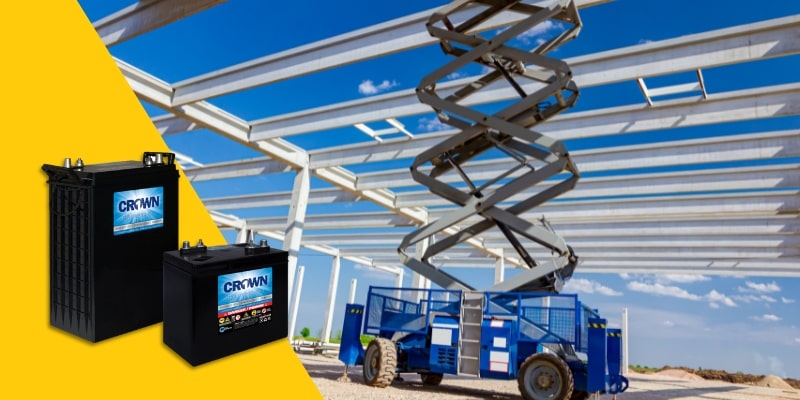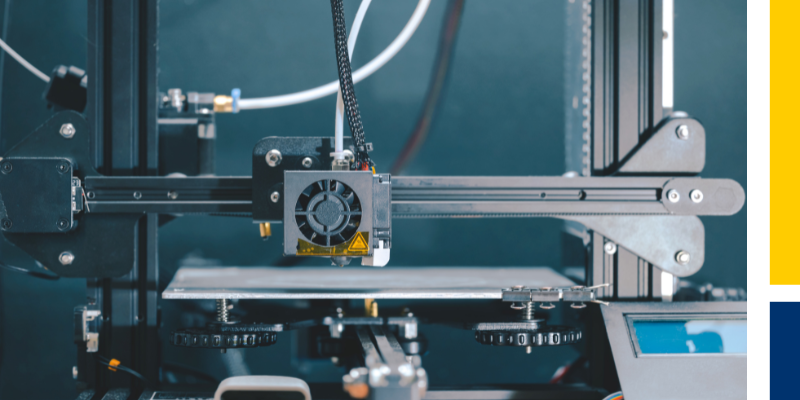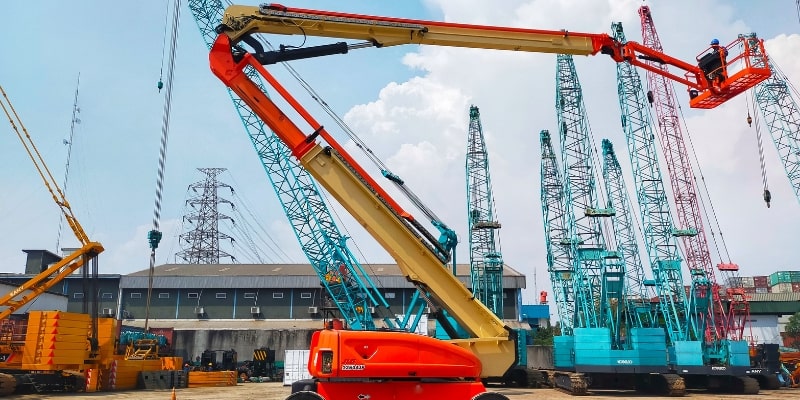Whether you’re managing a warehouse or shift operations, reliable batteries are critical for material-handling equipment like forklifts, lift trucks, and scissor lifts.
And for decades, flooded lead-acid (FLA) batteries were the go-to option, valued for their longevity, affordability, reliability, and ease of maintenance.
But since the 1970s, absorbent glass mat (AGM) batteries have increasingly been selected for use in demanding applications like the military, aircraft, telecommunications, and material handling.
And they’ve been upgraded and reinvented ever since then. Today’s Crown’s AGM batteries are designed using 3D printing and modeling, robotically welded, and field-tested on six continents.
Same fundamental chemistry principles but entirely different engineering and execution compared to conventional models. This has seven advantages that boost uptime, reduce maintenance, and increase safety.
1) Near-Zero Maintenance and No Watering
AGM batteries feature a unique, sealed design, eliminating the need for watering.
How it works: AGM batteries have “plates” – metal latices that hold energy-storing chemicals. These plates don’t dry out thanks to recombination, where oxygen and hydrogen combine during regular cycling.
Now, the initial manufacturing cost is higher for this design because plates are wrapped and compressed. But AGM's near-zero maintenance often leads to a superior ROI because they don’t require watering.
Of course, remember that even "maintenance-free" batteries – including AGM and other batteries like lithium-ion (LI) – still require periodic inspection, particularly in extreme temperatures.
2) AGM Boosts Uptime and Reliability
If your batteries fail, your material handling equipment – and your operations – grind to a halt.
Battery downtime hurts your customers, slashes your profits, casts doubt on your efficiency, and makes you look bad… even though it isn’t your fault.
The exceptional reliability of Crown AGM batteries comes from their robust construction. This makes them ideal for can’t-fail applications, including hospitals, remote telecom towers, military bases, and even aircraft black boxes – where safety regulators still ban LI batteries.
The plates in AGM batteries are wrapped in thin, fiberglass mats that absorb the electrolyte. Crown uses high-end fiberglass, and a robotic wrapping machine covers all sides of the plates. This sealed design helps AGM batteries withstand harsh environments and extreme temperatures better than FLA batteries.
A more comprehensive operating range and AGM’s ability to deliver high currents ensure Crown AGM batteries remain dependable.
3) Vibration-resistance = Longer Life
Vibration can significantly shorten battery lifespan – especially in material handling, where equipment is subject to sudden jolts and ongoing vibrations. And vibration poses a risk for all batteries, from FLA and AGM to lithium-ion (LI) and lithium-iron phosphate (LiFePO).
Fortunately, AGM’s design minimizes damaging vibrations. The thin fiberglass mats between battery plates protect them. And because the battery is held under pressure, there’s no movement of the battery's internal components.
This pressure ensures improved performance and longevity and offers better shock resistance than most FLA, LI, and LiFePo batteries.
4) Faster Opportunity Charging
Opportunity charging is charging batteries during downtime, such as during lunch breaks or shift changes. And AGM batteries pull ahead here: their design and lower internal resistance allow for more excellent current absorption – so AGMs can charge up to 5X faster than FLA batteries. All while offering higher current delivery.
5) Value and Lifetime Cost
While AGM batteries offer superior durability and convenience, they’re typically only a third of the cost of lithium-ion (LI) batteries. AGM’s long life and lower per-kWh cost offer excellent lifetime value for most applications.
6) Improved Safety
AGM batteries are leak-proof. And they aren’t prone to thermal runaway, making them safer for employees and equipment. In comparison, lithium-ion batteries carry an increased fire risk due to their higher energy density.
7) Enhanced Sustainability
Lead batteries are more recycled than aluminum can – 99%, according to the U.S. EPA.
And if you want to hit your sustainability goals – and avoid footing the bill for battery disposal – make sure you check out our first-ever Battery Sustainability Fact Book. This objective, product-agnostic guide walks you through energy storage sustainability in plain English – and gives you easy-to-follow checklists that reduce your battery costs and environmental footprint.
Correction: The original blog, published on August 9, 2023, referenced inaccurate AGM charging speed data. That content has been removed. The updated version of this blog was published on August 16, 2023.











